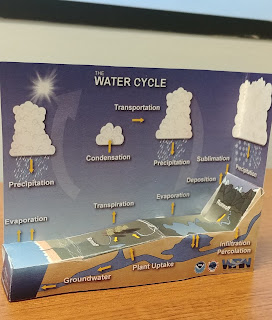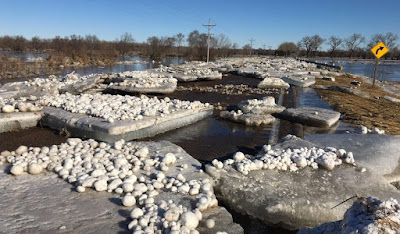by Marcia Lee, Central Platte Natural Resources District
In 2004, Groundwater Foundation staff approached the Central Platte Natural Resources District (CPNRD) about handing over their flagship youth event—the state’s first Children’s Groundwater Festival, which had been held in Grand Island, Nebraska since it began in 1989.
The CPNRD staff was excited to take on the challenge. In 2005, the Foundation and the NRD co-coordinated the event for a smooth transition. CPNRD staff Kelly Cole, programs coordinator, and Marcia Lee, information/education specialist, have been coordinating it ever since.
“That first year on our own we were both eager and nervous about taking on a statewide event,” said Lee. “The guidance we received from the Foundation assured that everything went smoothly.”
This May marked the 30th year that the festival has brought professionals together to teach youth about all aspects of groundwater. Lee said over the 30 years, the message students take in has remained the same—groundwater is a precious resource and we all have a part in protecting and preserving it.
Over 30,000 students from across the state of Nebraska have attended the Festival over the years. The festival model has been replicated in 42 states in the United States, and in Mexico, Canada, India, and the United Kingdom. At the Nebraska festival, students participate in 25-minute in-depth classroom activities and a stage show that relate to groundwater. Professionals from state and local agencies, environmental organizations, and other volunteers teach about groundwater interactions with surface water and effects of pumping, the Ogallala aquifer, pollinators, stream flows, wetlands, pollution, drinking water, recycling, wastewater, industry use, the water cycle, water filtration, municipal systems, and more.
Festival coordinators set each school’s schedule, placing the students in six different activity topics, where various they learn about their topic through fun hands-on activities, games, and relay races.
Teachers are provided a pretest to give to their students prior to attending the festival and then a post-test following the event. “We’ve found that students retain information better when they are personally involved in the activities, so we encourage every presenter to make their activity
interactive,” Lee said.
Cole said a few changes have been made over the years. The first was to rename the event the Nebraska Children’s Groundwater Festival and partner with the Grand Island Community Foundation, a 501(c)(3) nonprofit organization. The Festival Committee reaches out to businesses and individuals each year for donations to cover equipment, materials, and sack lunches provided to students, teachers, presenters, and volunteers beyond the $10,000 that the CPNRD budgets annually for the festival.
A change that will take effect in 2020 is the shift from inviting both fourth and fifth grade students to only fifth grade. The Festival Committee worked with the Nebraska Department of Education to determine which grade-level best fit the Festival with the new science standards, and determined that the festival correlates with fifth grade curriculum. The change will also allow schools to be on an every-other-year rotating invitation.
The festival’s location is also a vital aspect to the number of schools that can attend. Since its inception, the festival has been held in Grand Island, which is a central location for most schools in the state.
“We’re so fortunate to have Central Community College and College Park as partners,” said Cole. “They’ve allowed us to take over their campuses to hold the festival at no cost for 30 years.”
A good indicator that the festival is successful are the evaluations that are returned each year. Teachers, presenters, and volunteers are encouraged to complete evaluation forms to help the coordinators make improvements each year.
Even better indicators are letters from college students. The CPNRD has received several letters from former students who say they appreciate the opportunity to attend the festival as elementary students and that it opened their eyes to their career path.
“It’s incredibly rewarding when we
receive those letters,” Lee said. “It’s
gratifying to know that the Nebraska
Children’s Groundwater Festival has
made a personal impact on someone’s
life and that they share the same
devotion to groundwater that we do.”
Cole and Lee say the event seems
to get easier each year and they don’t
lose as much sleep as that first year.
The hard work is worth it, and they hope
the Nebraska Children’s Groundwater
Festival continues to impact students—
at least another 30,000 Nebraska youth
over the next 30 years.
For more information about the
Nebraska Children’s Groundwater
Festival, visit
www.cpnrd.org/groundwater-festival.


















































